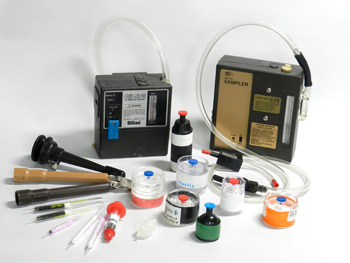What is occupational hygiene and how can it reduce health hazards in your workplace?
Occupational and  industrial hygiene is generally defined as the art and science of the anticipation, recognition, evaluation, communication and control of environmental stressors in, or arising from, the workplace that may result in injury, illness, impairment, or may affect the well-being of workers and members of the community. These stressors are normally divided into the categories biological, chemical, physical, ergonomic and psychosocial.
industrial hygiene is generally defined as the art and science of the anticipation, recognition, evaluation, communication and control of environmental stressors in, or arising from, the workplace that may result in injury, illness, impairment, or may affect the well-being of workers and members of the community. These stressors are normally divided into the categories biological, chemical, physical, ergonomic and psychosocial.
Occupational hygiene involves the identification of existing and potential health hazards from the workplace, the evaluation of the extent of risk posed by the hazards and the development of effective strategies to eliminate or control the risks.
The occupational hygienist is concerned with the broader environment, e.g. workplace discharges into the natural environment. The hygienist has an appreciation of the differential impacts of chemicals on workers and the general public.
Occupational hygiene brings together many disciplines such as biology, chemistry, physics, medicine, engineering, and toxicology. It is the part of risk assessment that focuses on the interaction between workplace hazards and health consequences. The control or elimination of these risks is the goal of the discipline.
Occupational hygienists have comprehensive knowledge of workplace chemicals and physical factors such as noise and heat stress. They have knowledge of chemical safety (e.g. flammability, water reactivity, etc.) and are familiar with biological factors and ergonomics but usually work together with those who have specific expertise in these areas.
An Occupational Hygienist may:
- Review projects, designs and purchases to anticipate hazards
- Critically evaluate environments, processes, materials inventories, and worker demographics to recognize potential health risks to persons or communities
- Assess human exposures to hazards through a combination of qualitative and quantitative methods to determine health risks and regulatory compliance
- Recommend effective control measures to mitigate risks via engineering, administrative, or personal protective methods
- Communicate risks and control methods to affected parties including workers, unions, management, clients and/or communities
- Provide education and training about risks and control measures
- Conduct research and development of Occupational Hygiene methods and tools
- Provide academic education and training in Occupational Hygiene
- Develop, implement and audit Occupational Hygiene and related programs
- Manage, supervise or advise Occupational Hygiene personnel
- Coordinate Occupational Hygiene programs with related risk management efforts, including Safety, Environment and Medicine
- Interface with regulators, communities and professional associations
- Advise on the development of government laws and programs related to Occupational Hygiene
- Provide expert advice in legal and regulatory matters relating to Occupational Hygiene
(Adapted from CRBOH 1998)
